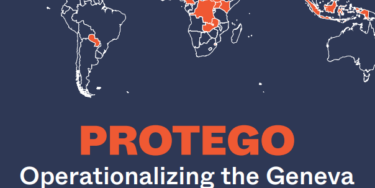Due Diligence & State Responsibility to Eliminate Violence Against Women: Region Africa
(report)
Download DOCXThis report analyses the ‘due diligence’ principle and state obligation to eliminate violence against women in Africa.
The ‘due diligence’ principle is now generally accepted to include an obligation of the State to prevent, protect against, prosecute, punish and provide redress for acts of violence against women (“5P’s”).
The report is divided into five sections:
- Section I introduces the principle of ‘due diligence’ and its evolution to the point where today it is generally accepted that a State has an obligation to prevent, protect, prosecute, punish and provide redress for acts of violence against women, whether committed by State or non state actors.
- Section II sets out the purpose, scope and methodology of the report. It delineates the scope of the report, including providing the definition of violence against women used and the various forms of violence, contexts and groups of women focused on in particular. Finally section II also shares the methodology of the report, locating it within the larger Due Diligence Project, and describing the various inputs that went into the elaboration of the report.
- Section III delves into the situational context of the Africa region, detailing the relevant socio-political-legal context within which the violence against women and related State (in)action is taking place. It also elaborates on the forms of violence particularly visible in this region, and the manner in and extent to which the due diligence principle has unfolded within the region.
- Section IV lays out the findings of the report. Trends are indentified, good practices illustrated, and recommendations made. These are organized according to five areas in which the due diligence principle is applicable, namely prevention, protection, prosecution, punishment, and provision of redress. In this report, these five areas are also referred to as the “5P’s”
- Section V closes with conclusions and reflections for future action.



